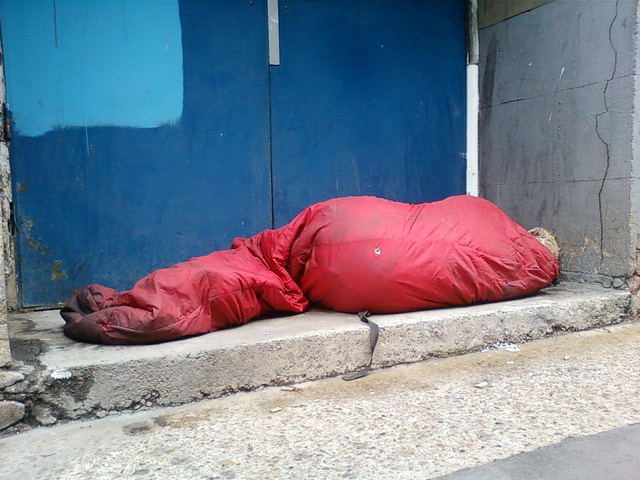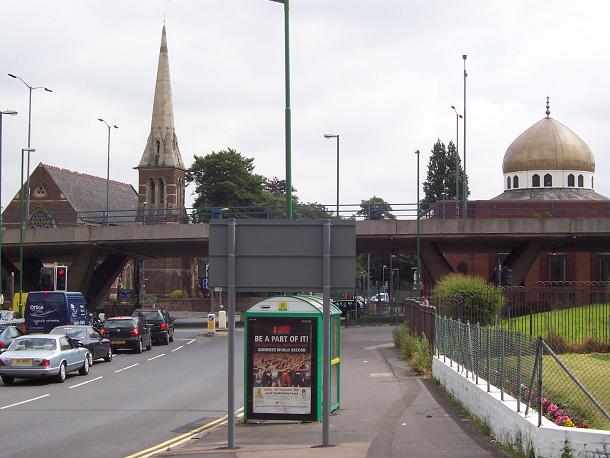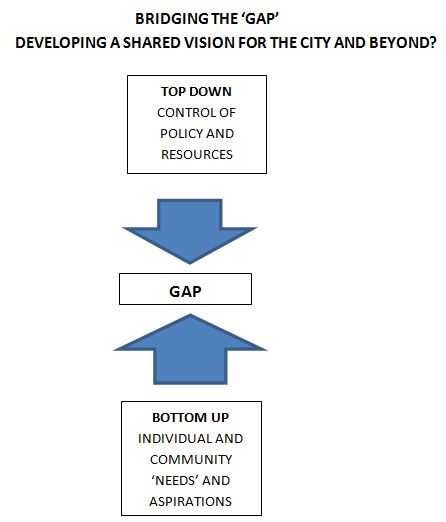This blog was first posted on the Urban Living Birmingham Blog.
Below are contributions in response to a request for the best and worst of Birmingham. They formed part of an impromptu exhibition held at the March 2017 Urban Living Birmingham Touchstone Group Meeting.
From the author, David Thew, Secretary to the Futures Network West Midlands (FNWM)
VISIBLE NEGATIVES
Congestion

Without appropriate action, there is a danger that this will strangle the growth potential of the City whilst also undermining the environment for the many local communities that are affected by it (i.e., air quality, noise, and restricted accessibility).
It has been estimated that, over the longer term, there is the potential for a further 50,000 jobs in the City Centre, but how will these jobs be accessed?
Some assumptions: Perhaps 10,000 jobs will be taken up by more people living locally through increased ‘City Living’? Perhaps 20,000 jobs will be taken by people using significantly improved public transport for their journey to work? But, are such assumptions realistic and what about access to the remaining 20,000 jobs?
What are the alternatives? Perhaps cycling can make a small contribution, but it takes up road space. Perhaps there is a need to encourage a wider distribution of these jobs – particularly to other centres across the West Midlands (such as in the Black Country)? Perhaps there is a need for more effective strategic planning, joining up economic, transport and housing policy more effectively across a wider area?
Rough sleeping – a reflection on the divided nature of the City?

There is a danger that there is an increasing, unsustainable polarisation between the ‘haves’ and the ‘have nots’ across different parts of the City. This requires not only short-term action to provide civilised shelter for all (and a more equitable share of housing, particularly increased provision of social housing) but also the consideration of new, longer-term, more inclusive, economic and social ‘futures’.
HIDDEN POSITIVES
Multi-faith initiatives – bringing different faiths and cultures together to promote understanding

The diversity of different cultures can make a positive contribution to the life of the City but there is a need for a deeper understanding of people’s different faiths and lifestyles and the exploration of shared values.
Developing and strengthening local communities – the challenge: to bridge the ‘GAP’ in developing a shared vision for the City.

There is great potential for neighbourhood planning to address this issue.
An example – the Balsall Heath Neighbourhood Development Plan 2015-2031identifies a range of local development issues from meeting housing needs, supporting local centres and meeting the demand for services through to improving the local environment and improving connectivity. As stated in the Plan – “for all these development needs to be addressed, it will be necessary to reconcile the views of the community with the aspirations of landowners and the planning objectives of the City Council” – the challenge of bridging the ‘gap’.
To sign up to our blog mailing list, please click here.
